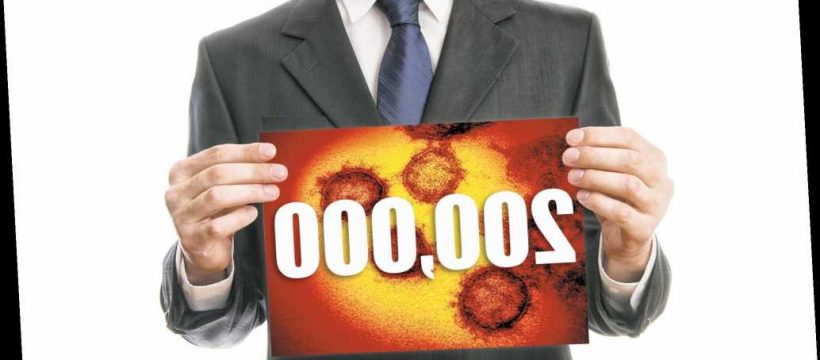On Sept. 22, CNN triumphantly announced that 200,000 people had died from COVID-19 in the United States.
CNN tried various ways of rubbing in the 200,000 figure. Their best effort was an infographic blaring, “US COVID-19 deaths are equal to having the 9/11 attacks every day for 66 days.”
Here’s a less biased, but less catchy, comparison: 2020’s attributed COVID-19 deaths were equivalent to having another 2017-2018 flu and pneumonia season boosted by 13 percent.
The CDC estimated that about 177,000 Americans died during the 2017-2018 flu season, from either the flu itself or by complications of pneumonia. (The CDC never made a public announcement about this number, but you can count it yourself from data on its site, as I did in the chart below.) That was a bad year, noted at the time, but mostly by medical professionals. Those with good memories will recall seeing more “Wash Your Hands” and “Cough Into Your Elbows” posters.
Still, nobody remembers a panic. Just as nobody remembers mask mandates or political leaders shutting down small businesses and locking the healthy in their homes. Because, of course, none of that happened. (This lack of panics during past pandemics is detailed in our book, “The Price of Panic: How the Tyranny of Experts Turned a Pandemic into a Catastrophe.”)
On the same day as CNN’s announcement, the CDC officially posted a total 187,072 deaths attributed in some way to COVID-19. Deaths were boosted to a hair under 300,000 after adding in pneumonia and flu.
This is the more important number, since it captures the disease burden better than CNN’s. Even so, it’s not clear how many deaths were caused by the coronavirus alone, how many died with but not simply from infection by the coronavirus, and how many died of other things but just happened to be infected around the time of death.
The CDC itself caused a stir at the end of August by estimating that the virus directly caused only 6 percent, or now just over 11,000 of the 187,000 attributed deaths. Most of these deaths were in the elderly.
The remaining 94 percent died with and not exclusively of the coronavirus. These people also were on average elderly and had 2.6 other health problems. This implies a good fraction who succumbed had three or more comorbidities. In other words, most deaths attributed to the coronavirus were in very sick people.
Unfortunately, tests for the presence of the bug are prone to false positives. This is when the test says somebody has a current infection when they don’t. The test can mistake past infections as current, or even tag infections of other coronaviruses. The one causing COVID-19 is only one among many.
False positives are not normally a big concern. They are this year because of the huge number of tests given. According to The COVID Tracking Project, in September we averaged over 800,000 tests every single day. Over one million tests were conducted on several days.
Even a tiny false-positive rate at this level is a problem. Take the 1 percent false-positive rate, cited by some. If 5 percent of the public has the disease at one time, a million tests will produce 9,500 false “new cases.”
It might seem odd that testing numbers are going up even as attributed deaths drop. But this paradox is largely due to the fact that we do so much testing. Deaths re-peaked in late July as the virus spread in southern states for the first time. They have been dropping rapidly since. If the current rate of decline holds, attributed deaths will drop to a background level by the end of October.
Even calling positive tests “cases” overstates the problem. True cases are active illnesses that need treatment. But by now most people testing positive are asymptomatic or have only mild illness.
That’s the real lead in this story: Fewer people are dying and more people are recovering with few or no problems. So why does the press keep burying it?
William Briggs, Jay W. Richards, and Doug Axe are the authors of “The Price of Panic: How the Tyranny of Experts Turned a Pandemic into a Catastrophe.”
Share this article:
Source: Read Full Article

